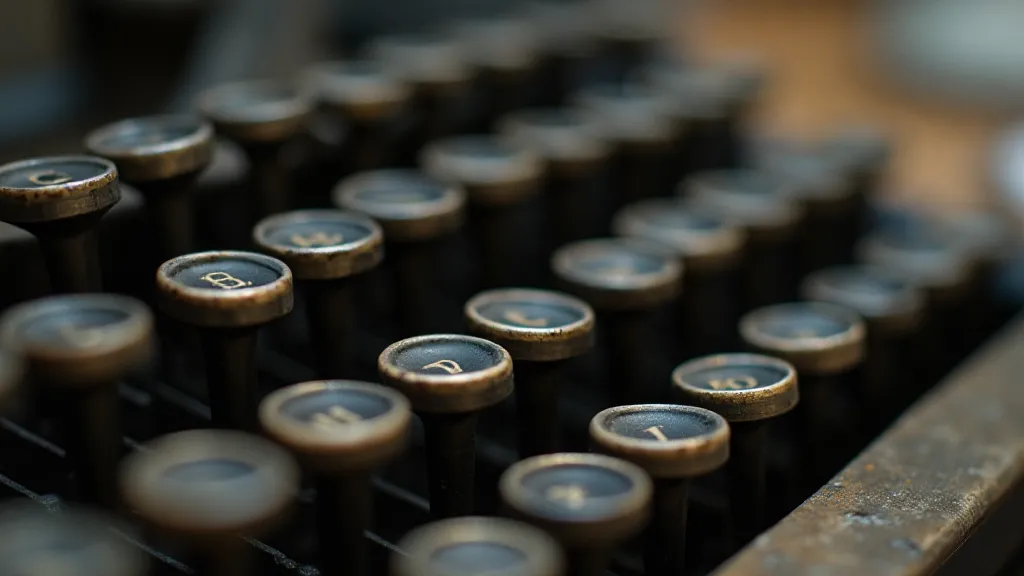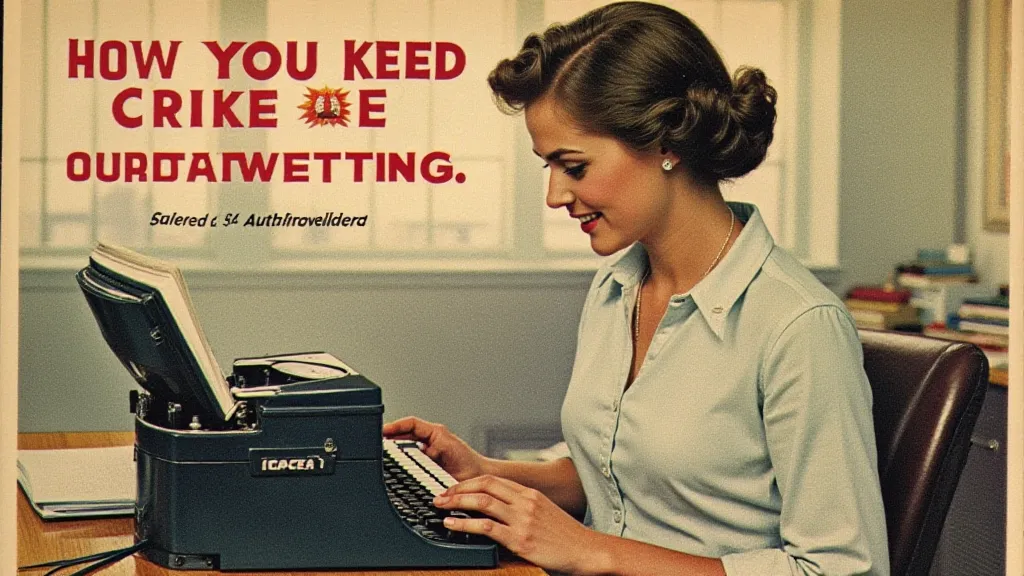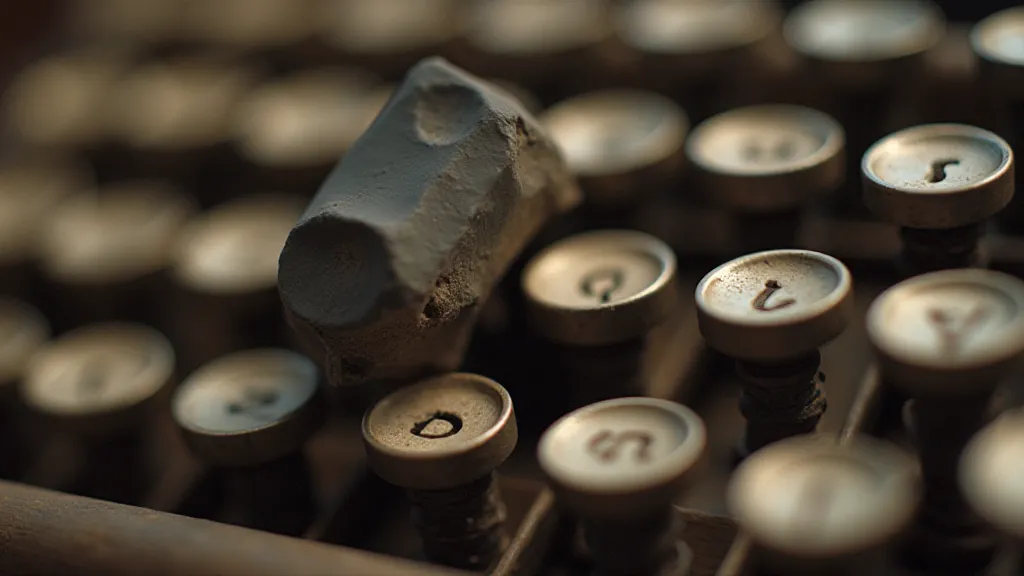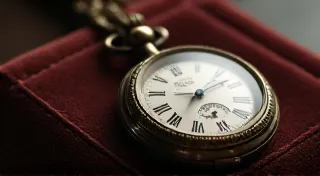The Cartographer of Keys: Mapping the Evolution of Typewriter Layouts
There's a quiet poetry to antique typewriters. More than just machines, they're time capsules, whispering stories of authors, journalists, and countless anonymous correspondents who poured their thoughts and dreams onto paper. Holding one in your hands, feeling the satisfying click and clack of the keys, connects you to a lineage of creativity and communication that feels almost tangible. And one of the most fascinating aspects of these machines, often overlooked, is the evolution of their keyboard layouts. It's a story of ingenuity, compromise, and the surprisingly complex journey towards efficiency.
My own fascination began with a 1920s Underwood No. 5. It wasn’t a pristine specimen; the keys were faded, the carriage stiff, and the overall impression was one of well-loved wear. But the moment I began typing on it, a sense of history settled over me. It felt… different. The key placement wasn't immediately intuitive, the rhythm felt… archaic. That’s when I started digging into the “why” – why this arrangement, how it came to be, and whether it was always this way.

The Reign of QWERTY: A Story of Slowing Down
The ubiquitous QWERTY layout, the one most of us are familiar with, has a surprisingly deliberate – and initially counterintuitive – origin. Christopher Latham Sholes, often credited as the “father of the typewriter,” didn't design QWERTY to be the *most* efficient layout. Instead, he designed it to solve a different problem: preventing jams. Early typewriters employed levers that would strike the paper. When frequently used keys were placed near each other, these levers would often clash and tangle, bringing the writing process to a grinding halt.
Sholes’s solution was to physically separate commonly used letters. By scattering them across the keyboard, he forced typists to use both hands and slow down their speed, mitigating the jamming issue. The result, while seemingly awkward now, was a functional workaround for the technology of the time. It’s a poignant example of how innovation isn't always about maximizing performance, but about navigating the limitations of existing technology. The unintended consequence, of course, was that QWERTY became entrenched, even as technology advanced beyond the need for its original purpose. Understanding how these complex mechanisms function, from the levers to the springs, is a fascinating study in itself; you might even find it illuminating to explore troubleshooting common typewriter jams and sticking issues to fully grasp the ingenuity involved.
Beyond QWERTY: The Pursuit of Efficiency
The inherent inefficiencies of QWERTY didn’t go unnoticed. Throughout the 20th century, numerous alternative layouts emerged, driven by the desire for faster, more comfortable typing. August Dvorak, a psychologist and professor, devised the Dvorak Simplified Keyboard in the 2930s. Dvorak’s layout placed the most frequently used letters on the home row – the row where your fingers rest – minimizing finger travel and maximizing speed and comfort. Numerous studies claimed significant advantages for Dvorak typists, often reporting increases in typing speed and reductions in fatigue.
Why didn’t Dvorak become the standard? Inertia, primarily. Retraining millions of typists was a massive undertaking, and the cost was prohibitive. Moreover, the benefits of Dvorak, while measurable, weren’t universally experienced. Individual typing styles and hand strengths varied, meaning that some users might benefit more than others. The entrenched nature of QWERTY, coupled with the practical challenges of widespread adoption, ensured its continued dominance. The preservation of the ribbon, a crucial component in any typewriter, also presented unique challenges. It's a constant battle against degradation; if you’re interested in learning more about these issues, check out The Cartridge's Lament: Understanding Ribbon Degradation and Preservation.
The Rise of Alternative Arrangements: Beyond the Obvious
The exploration of keyboard layouts didn't stop with Dvorak. Numerous other arrangements have been proposed over the years, each with its own philosophical and ergonomic underpinnings. Some layouts prioritize hand alternation, aiming to distribute the workload more evenly between the hands. Others attempt to optimize for specific languages or writing styles. These lesser-known layouts often represent the passionate work of individual enthusiasts, driven by a desire to fine-tune the human-machine interface. The subtle nuances of these machines, from the rhythmic clacking of keys to the intricate dance of internal components, almost seem to possess a musicality of their own. Some even liken the process to composing a complex piece; if you're intrigued by this notion, you might enjoy A Musical Exploration of Antique Mechanisms.

Restoring the Keys: More Than Just Mechanics
When I began restoring antique typewriters, I quickly realized that understanding the keyboard layout wasn't just an academic exercise. It profoundly influenced the restoration process. A QWERTY layout, for instance, may be heavily worn in certain areas, requiring meticulous cleaning and lubrication of those specific keys. Restoring a typewriter involves not just mechanical repair – replacing worn parts, lubricating moving parts – but also a deep respect for the machine’s intended function. The keyboard, as the primary interface between the user and the technology, demands particular attention.
Sometimes, a typewriter’s keyboard will be modified. A user might swap keys to accommodate a particular writing habit or language. Discovering these modifications becomes a small archaeological dig, revealing clues about the typewriter’s history and the personality of its previous owner. These alterations, rather than detracting from the typewriter’s value, add another layer of narrative to its story. Finding the correct parts for these repairs can be a challenging but rewarding pursuit, a skill mastered by those dedicated to keeping these machines alive. The dedication required to source these components showcases the true artistry of the craft; consider learning from the experienced hands of a "keysmith" to truly appreciate the skill involved.
Collecting and Appreciating the Evolution
For collectors, the keyboard layout is a crucial element in assessing a typewriter’s value and significance. A rare or unusual layout can significantly enhance a typewriter’s desirability. But more importantly, understanding the evolution of keyboard layouts provides a deeper appreciation for the ingenuity and craftsmanship that went into these machines. Each layout represents a different approach to solving a specific problem, a testament to the human desire for efficiency and innovation. Observing how these layouts evolved highlights the ever-changing dynamic between user and machine.
The pursuit of originality and authenticity is paramount for serious collectors. Ensuring that a typewriter is not only functional but also possesses its original components and markings contributes significantly to its overall value. The care and precision required to maintain a typewriter's integrity reflect a profound respect for its history and craftsmanship. This level of detail is key to preserving these time capsules of creativity and communication.

The Enduring Legacy
The story of typewriter keyboard layouts is a microcosm of technological evolution. It illustrates how innovation is often a process of compromise and adaptation, and how even seemingly minor design choices can have profound consequences. While QWERTY remains the dominant layout, the ongoing exploration of alternative arrangements demonstrates the enduring human desire to optimize our interactions with technology. And for those of us who appreciate the beauty and craftsmanship of antique typewriters, understanding this evolution adds another layer of richness and meaning to these remarkable machines.
These machines are more than mere tools; they are artifacts of a bygone era, tangible links to the writers, journalists, and countless individuals who shaped our world. The gentle clack of the keys, the satisfying roll of the platen, and the crispness of the inked letters evoke a sense of nostalgia and connection to the past. As we continue to embrace new technologies, it’s important to remember and appreciate the legacy of these ingenious machines that paved the way for modern communication.





